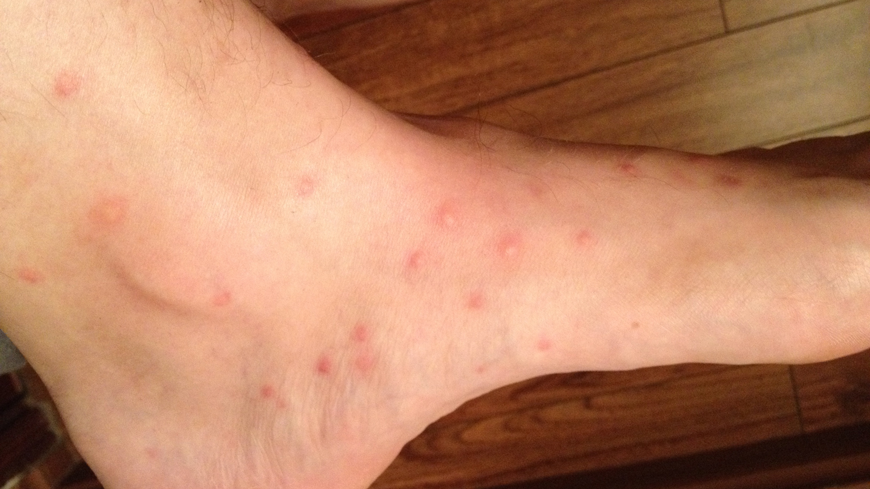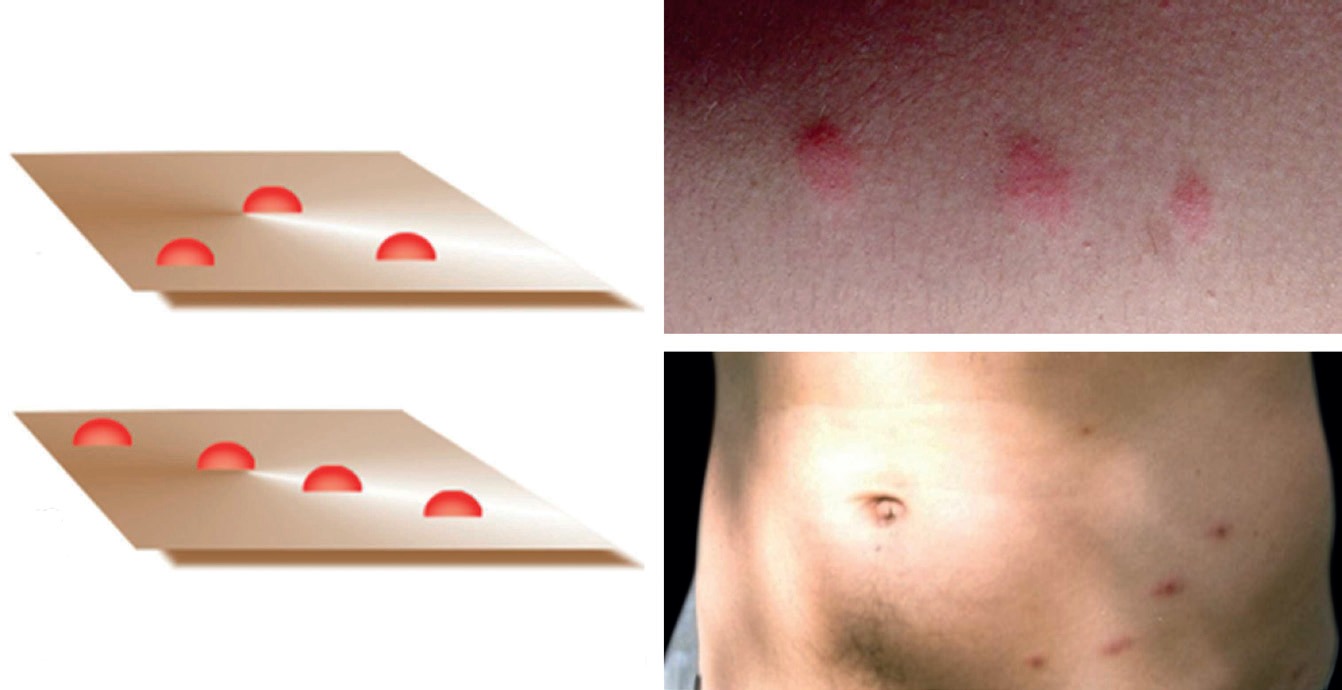
Img 1 Numerous flea bites are usually found together, often in clusters of 3.
Summary
Fleas usually bite three times during a single blood meal. Numerous bite marks arise when fleas probe the skin for a suitable feeding location, or when they’re interrupted during a blood meal and relocate to bite again.
Details
Fleas Bite Pattern
Flea bites commonly appear in groups of three. However, there may be more or less. Every lesion arises from a separate bite location.
Typically, two to three bites occur within a few centimeters. Thus, they tend to be arranged in a triangle or line. These clustered groupings are characteristic of both fleas and bedbugs. The lesion pattern is called a meal cluster or a breakfast, lunch, and dinner configuration. Most other bloodsucking arthropods don’t display this bite pattern, so clinical observations can help diagnose fleas or bedbugs. However, the individual lesions are indistinguishable from other biting insects.

Img 2 Clusters of insect bites in lines or triangles are indicative of fleas or bedbugs.
Why Fleas Bite in Threes
Exploratory Probing
A single flea often causes multiple lesions. Prior to consuming a blood meal, it will probe the host’s skin in order to find a good feeding location. While probing, salivary apyrase is injected into the skin. Apyrase has anticoagulant properties, which helps the flea to locate blood. The probing process alone is sufficient in causing a bite reaction.
Disruptions during Feeding
Fleas feed immediately upon reaching human skin. However, it’s easy for them to get disturbed. Movement from the host (or clothing) can disrupt a feeding flea. An interrupted flea will then find another nearby feeding location. Subsequent bites will lie in close proximity to the first bite. This leads to rows or chains of lesions all within the same neighborhood.
When disturbed, fleas may take brief refuge in clothing. If a flea can’t find a way to leave the person, it may hide in clothing and periodically feed, sometimes for days.




You must log in to post a comment. Log in now.